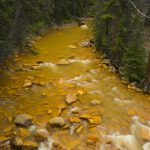 In August last year, the Gold King Mine in Colorado was the source of a major environmental disaster that almost destroyed the nearby Animus River. While the Gold King Mine disaster was very similar to the Baia Mare Cyanide Spill, the causes and impact were quite different.
In August last year, the Gold King Mine in Colorado was the source of a major environmental disaster that almost destroyed the nearby Animus River. While the Gold King Mine disaster was very similar to the Baia Mare Cyanide Spill, the causes and impact were quite different.
The Gold King mine was abandoned in 1923, but was filled with pollutants affecting the local watershed – so much so that the area was nominated by the Environmental Protection Agency (EPA) to become a Superfund site. However, the Superfund label was resisted by locals dependent on a tourism economy. Even though the area wasn’t designated as a Superfund site, the EPA was still permitted to do limited work to abate environmental impacts of the mine. Unfortunately, this ultimately led to the disaster.
The EPA contracted Environmental Restoration LLC to address the acid mine drainage problems at Gold King. Unlike Baia Mare, the acid mine drainage was not caused by cyanide-centric gold mining practices, but was a naturally occurring part of the rock weathering process. The abundance of metal sulfide minerals, like pyrite, accelerated and exacerbated by mining activity caused the mine to leak acidic wastewater tainted with arsenic and heavy metals like cadmium and lead.
While building a system to stem and treat the leaking wastewater, the crew’s machinery breached a wall that was holding back the wastewater, spilling approximately 3 million gallons of it into Cement Creek – a tributary of the Animus River which flows all the way to New Mexico.
The event caused a national stir. We’ll examine the fallout in our next post.











